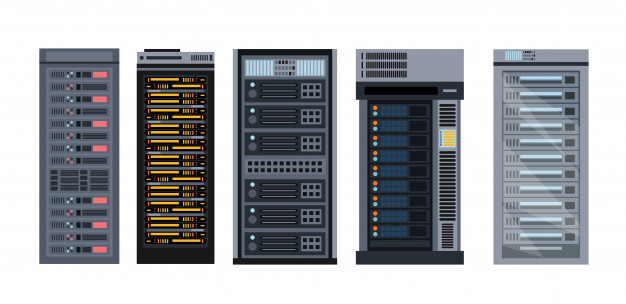In general, a server can be considered as a device that has a particular set of programs or protocols which provide various services. A set of devices, a server, and its clients form a client/server network, and it provides routing systems and access to information and stored data centrally.
There are several different types of computers supporting a set of industrial, military, and commercial applications. The most common type of computer supporting this is the Rack server. A rack server is also known as a rack mount server. It is a computer designed to be placed in a rectangular structure commonly referred to as the server rack.
Generally, Rack servers are 19 inches wide and about 1.75 inches high to fit in the typical racks made for fitting these servers.
Basic Overview about Rack Server System
A rack server is also known as a rack-mounted server. It is a computer that is dedicated to using as a server which is designed to be fit inside frameworks called racks. Every rack consists of multiple mounting slots which are called bays and they are designed to hold hardware units put in place with screws. A typical rack server has a low-profile enclosure as compared to tower servers which are built into a high and upright standalone cabinet.
The advantages which a server rack poses to us are that it is capable of presenting us with better space conservation, ever-increasing scalability, maximized flow of air when coupled with a good cooling system, and also ease of regular computer maintenance. The design allows the technicians and operators to easily slide the rack servers in and out of the racks.
A single rack can fit multiple servers, stacking on top of each other which leads to the consolidation of network resources and minimization of the usage of floor space. This system of servers also simplifies the cabling procedure among the network components. In the place where the server rack is present, a special and dedicated cooling system is required to prevent the excessive heating up of the resources which is a common occurrence when many power dissipating components are present in a small confined room.
Very much like every other kind of server the rack servers work to provide data and other specific services to the clients. Most commonly, their presence can be found in data centers in huge numbers in the form of server racks and server rack cabinets.
Some data center managers still rely on outdated Excel files or Visio Diagrams and Homegrown systems to manage the rack servers in their jurisdiction, they become unreliable due to the high amount of manual operation. These processes are difficult to maintain and the tools are becoming ever so difficult to use. Nowadays, data center managers have started to use Data Center Infrastructure Management (DCIM) software. This software gives you the ability to maintain with accuracy all the inventory of all the data center assets which include rack servers and real-time viewing data across the data center.
Basic Components about Rack Server System
- A motherboard is responsible for communication between components.
- A CPU (Central Processing Unit) is responsible for executing start instructions.
- RAM (Random Access Memory) is also known as server memory. The better the RAM you have better the speed of data access.
- An HBA (Host Bus Adapter) is used to connect external devices to the server.
- Input and Outport ports are embedded into the system board.
- Drive bays are used to add hard drives and solid-state drives to the servers.
- Several other supporting equipment includes rails and cable management bars.
Benefits of Rack Server System
- Convenient: There is simple ease in terms of the addition or removal of rack servers. The technician responsible just needs to slide the server along the rails. The one thing the technicians need to keep in mind though that the larger the capacity of the server, the more efficient the cooling system needs to be. In addition, the servers are usually stacked horizontally in multiple racks thus taking up minimal data center space.
- Consolidated Network Resources: Every server has network interfaces. This makes it very easy to install network switches into the rack cabinets and connect all of the servers present in this switch.
- Expandable: The process of upgrades and the addition of new servers is very easy in rack servers. If the operations and needs of the company increase, there is already a lot of space to add new servers or process some upgrades. All the credit goes to the hot-swappable devices which can be easily removed without needing to switch off the system thus increasing the uptime for the server.
The need for servers and proper data management is becoming really necessary with every second ticking so using rack servers and their utility tools is a really good option in putting a good step into the future of data management and networking.






























































